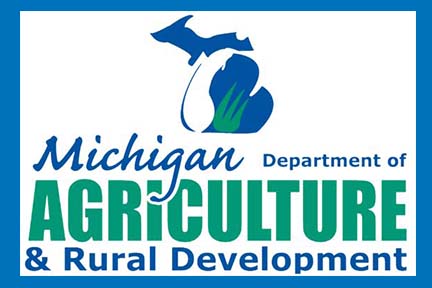 |
| For immediate release: October 23, 2023 Program contact: Rob Miller 517-614-0454 Media contact: Jennifer Holton, 517-284-5724 MDARD, horticulture industry on the lookout for invasive balsam woolly adelgidLansing, MI – The Michigan Department of Agriculture and Rural Development (MDARD) is working with the state’s horticulture industry to detect and respond to invasive balsam woolly adelgid, a tiny, sap-feeding insect that attacks true fir trees, including balsam, Fraser and concolor (white) fir. Balsam woolly adelgid has been identified in Kent, Missaukee, and Oceana counties. The site in Kent County was treated and monitoring is ongoing. MDARD is currently working with partner agencies to survey the areas surrounding the populations in Missaukee and Oceana counties. “An educated, vigilant horticulture industry is Michigan’s first line of defense against the spread of invasive species,” said Mike Philip, Director of MDARD’s Pesticide and Plant Pest Management Division. “Early detection and response are critical to protecting Michigan’s natural resources and horticulture businesses.” Nearly 1.9 million balsam fir trees populate Michigan’s forests in the Upper Peninsula and Northern Lower Peninsula. Fraser and concolor fir trees are not native to Michigan but are often planted on landscapes. Symptoms of balsam woolly adelgid infestation include:
If Michiganders suspect this invasive pest is damaging fir trees, they should take photos, note the location, and report it to the Midwest Invasive Species Information Network or MDARD at MDAInfo@michigan.gov or call 800-292-3939. For more information on balsam woolly adelgid and other invasive species in Michigan, visit Michigan.gov/Invasives. |

